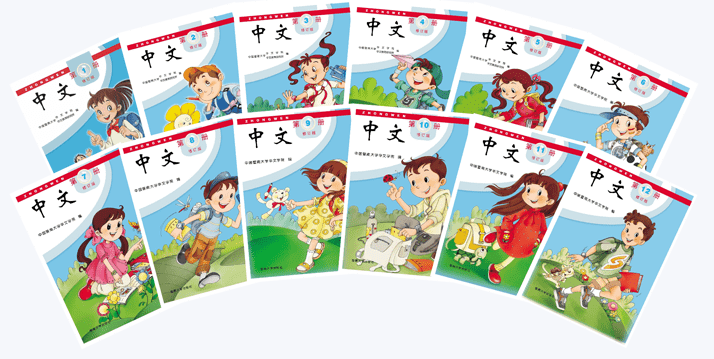
易学善教,启迪未来
Easy Learning, Virtuous Teaching, Enlightening the Future

中文学校采用《中文》(试用版)教材是1996年由中华人民共和国国务院侨务办公室委托暨南大学华文学院为欧美地区周末制中文学校的华裔小学生学习中文而编写的。全套教材共48册,其中《中文》主课本12册,家庭练习册24册(分为A、B册),教师教学参考书12册。1997年修订版《中文》教材全套共52册,除原有的48册外,另增编了配套的《学拼音》课本1册、《学拼音练习册》2册及《学拼音教学参考》1册。
此教材的教学目的是使学生经过全套《中文》教材的学习与训练,具备汉语普通话听、说、读、写的基本能力,了解中华文化常识,为进一步学习中国语言文化打下良好的基础。
本教材从教学对象的年龄、生活环境和心理特点出发,以中国国家对外汉语教学领导小组办公室汉语水平考试部编制的《汉语水平等级标准与语法等级大纲》(1996)、中国国家汉语水平考试委员会办公室考试中心制定的《汉语水平词汇与汉字等级大纲》(2001)和中国国家语委、国家教委公布的《现代汉语常用字表》(1988)等为依据或参考,科学地安排教材的字、词、句、篇章等内容,由浅入深、循序渐进地设置家庭练习,以期教学相长、学以致用,培养学生的学习兴趣,启发学生积极思考,提高学生运用中文的能力。同时,本教材参考和借鉴了海外现有中文教材许多有益的经验,力求达到教与练、学与用的统一,并在内容与体例、图文编排、题型设计以及教学理念的体现等方面有所创新。
中文学校有一批教学经验丰富,热爱教育事业,致力于弘扬中华文化的优秀教师队伍,帮助学生们更好地掌握和学好中文,更好地启迪未来。
| 课程 | 时间 | 内容 |
|---|---|---|
| 中文语言课 | 周六 01:30pm-03:30pm | 学前班-九年级 |
| 高中学分班 | 周六 01:30pm-04:30pm | Credit Chinese 10/20/30 |
| 中文课外活动 | 周六 12:30pm-01:30pm | 绘画班,素描班 I、数学高级班 |
| 周六 03:30pm-04:30pm | 舞蹈小班、舞蹈大班、素描班 II, 武术班、象棋班、数学初级班、数学中级班, 唱歌班 |
The textbook “Chinese” (Trial Version) was commissioned by the Overseas Chinese Affairs Office of the State Council of the People’s Republic of China to be compiled by the Chinese Language Institute of Jinan University for Chinese-American elementary school students studying Chinese in weekend Chinese schools in Europe and America in 1996. The complete set of textbooks consists of 48 volumes, including 12 main textbooks for “Chinese,” 24 exercise workbooks (divided into A and B volumes), and 12 teacher’s teaching reference books. In 1997, a revised version of the “Chinese” textbook set was released, totaling 52 volumes. In addition to the original 48 volumes, it included an additional “Learning Pinyin” textbook (1 volume), “Learning Pinyin Workbook” (2 volumes), and “Learning Pinyin Teaching Reference” (1 volume).
The teaching objective of this textbook is to enable students, through the study and practice of the complete set of “Chinese” textbooks, to acquire basic abilities in listening, speaking, reading, and writing in Mandarin Chinese, as well as to gain knowledge of Chinese culture. This aims to lay a solid foundation for further learning of the Chinese language and culture.
Starting from the ages, living environments, and psychological characteristics of the students, this textbook has been scientifically organized based on the “Chinese Language Proficiency Level Standards and Grammar Level Outline” (1996) compiled by the Chinese National Office for Teaching Chinese as a Foreign Language, the “Chinese Proficiency Vocabulary and Character Level Outline” (2001) developed by the Chinese National Language Committee, and the “List of Commonly Used Modern Chinese Characters” (1988) published by the Chinese National Language Committee and Ministry of Education. The content, from characters and words to sentences and passages, is gradually arranged to progress from simple to complex, with a step-by-step approach to home practice. The intention is to facilitate mutual growth of teaching and learning, encourage practical application of acquired knowledge, cultivate students’ interest in learning, stimulate active thinking, and enhance their ability to use the Chinese language. Additionally, this textbook draws from valuable experiences of existing Chinese language teaching materials overseas, striving to achieve a harmonious integration of teaching and practice, learning and application, while innovating in content, format, visual arrangement, question design, and pedagogical philosophy.
The Chinese Language School of Saskatoon possess a group of experienced teachers who are dedicated to education, love the teaching profession, and are committed to promoting Chinese culture. They help students better grasp and excel in the Chinese language, guiding them towards a brighter future.

